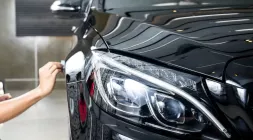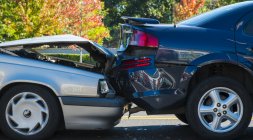Things you might not know about driving with 2 feet
Times have changed, and vehicles before aren’t the same as the ones manufactured now. That’s why driving styles are also different from how drivers drive before.
Driving a four-wheeled vehicle isn’t something that can be learned overnight. That’s why some people had to go and train for months just to learn how to drive safely. Some even had to enroll in dedicated driving schools to know everything they need about driving on the road.
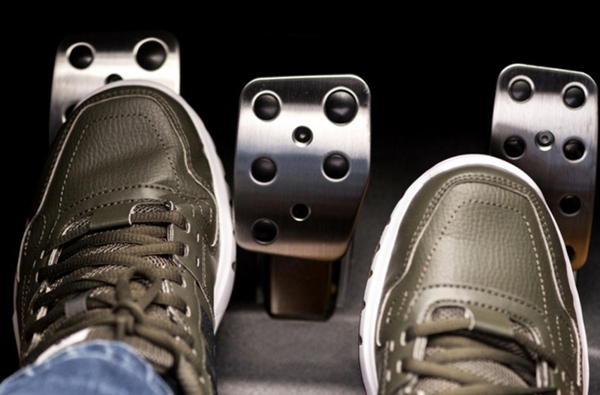
Should you keep one foot in between the brake and gas pedals even with an automatic transmission?
Most drivers who teach newbies will often advise that one foot should be used for both the gas and brake pedal. But way back then, vehicles most likely came with three pedals because of the manual transmission. This is why it was also referred to as the standard transmission. If you’re driving a stick shift, you will need to use both feet.
But times have changed, and vehicles before aren’t the same as the ones manufactured now. So should you still keep one foot in between the brake and gas pedals even with an automatic transmission? Read this article from Philcarnews.com.
Advantages of Using Both Feet
Increased reaction time
If you hover one foot over your brakes and hold it there, you can instantly press on it when necessary. You wouldn’t have to worry about pressing the brakes too late because your foot is right over it.
This lessens the time your vehicle needs to stop when you see a hazard on the road. This, overall, reduces the vehicle’s braking distance to decrease the possibility of an accident.
>>> Related: 7 Basic Driving Mistakes Most New Drivers Make

Hovering and holding one foot over your brakes, will allow you to instantly press on it when necessary
Hitting the gas accidentally
When using two legs while driving, you won’t have to worry about stepping on the accelerator instead of the brake. When driving, the driver’s legs are usually aligned correctly with the pedals.
With that said, there is a very small risk of the driver’s braking foot accidentally stepping on the gas. Your foot should know where it needs to step every time.
If you view the news every now and then, you may have car crash stories. You can also come across news of vehicles crashing into stores and shops. One of the reasons for this is accidentally stepping on the gas instead of the brakes.
>>> Related: 10 steps to master and take as soon as the car brake fails
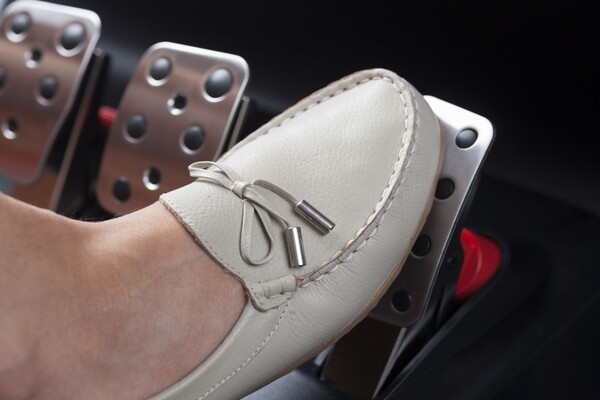
One of the reasons for this is accidentally stepping on the gas instead of the brakes
Keeping the Turbo
Racers who had a long experience of driving old rally cars use their left foot for braking. This keeps the turbocharger spooled when they want to slow the vehicle down for a turn.
In theory, some drivers of turbocharged vehicles who drive on racetracks enter and exit turn faster. But they can only do this by using the throttle while still braking. Making use of the pedals simultaneously actually lets them steer the vehicle with only their feet.
But for practical, “actual road” purposes, this will bring little to no benefit to regular drivers. And as you may already know, stepping on both the gas pedal and the brake can lead to ugly events.
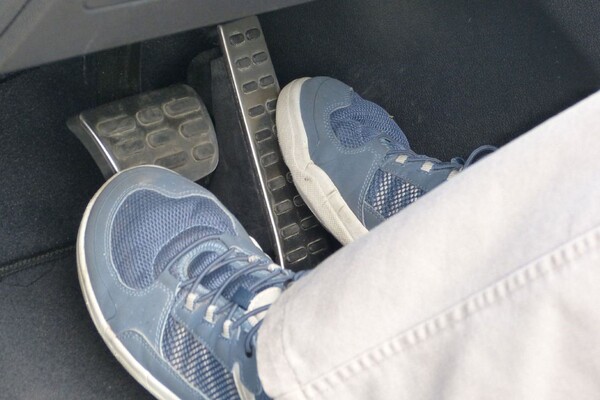
Stepping on both the gas pedal and the brake can lead to ugly events
Driving with intentional usage of both feet does seem to make more sense. If your vehicle has two pedals, there will more likely be a 1:1 ratio between them. While this makes excellent points on paper, in reality, and practice, it doesn’t always pan out.
However, when it comes to activities like driving, everyone has their own preferred method of getting from point to point. What you think may be efficient for you may not be so efficient for another.
If you feel aggravated when you’re not using both your feet, there is little argument for you. But we’ll try to convince you to the best of our abilities.
>>> Related: How to drive a car with an automatic transmission for beginners
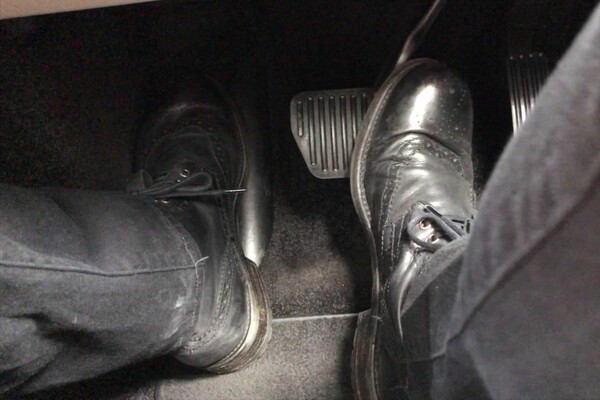
Driving with intentional usage of both feet does seem to make more sense
Driving with One Foot
A Dead Pedal
Some instructors teach their driving students to keep their left foot and put it on the dead pedal. If you don’t know what that is, that’s basically what it’s called. It’s not connected to any mechanical part.
It won’t do any function at all whether you press on it or not. A dead pedal is just there to stabilize the driver. This is the stationary pedal that you can find at the leftmost part of the floor. In some vehicles, however, this may not even exist.
Now, you may not know what it is supposed to do at first. After all, everything in your vehicle is supposed to be there for a reason. So, at what point will you realize the dead pedal’s use?
Once you get into high-performance driving, you will know the purpose of a dead pedal. You may even thank the manufacturers because your car has one.
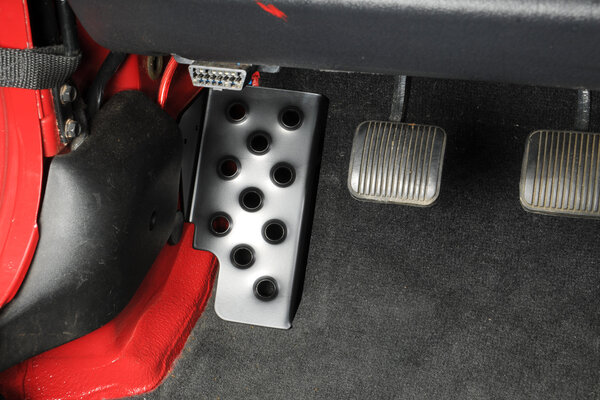
Some instructors teach their driving students to keep their left foot and put it on the dead pedal
The legs are equipped with some of the strongest muscles in the body. These are designed from the bottom to support a person’s weight. If you ever try to step on the brake or do a stiff turn with no dead pedal to rest your feet, you’ll slide off your seat.
It may sound comical and funny right now but this can be dangerous. It may become hard for you to operate your vehicle if you suddenly slipped. It would be even more terrible if you nudged the steering wheel accidentally because you slipped off your seat.
If you refuse to plant your left lower appendage on the vehicle’s dead pedal, this may lead to extreme fatigue. This is because weaker muscles will have to compensate to keep your entire body from flipping and slipping off your seat.
If your body doesn’t react this way without your foot on the dead pedal, you will fly all over. That can lead to a funny internet video or a very harsh accident to learn a lesson from. If you choose to brake using the left foot, your foot will travel farther starting from the dead pedal.
The former lengthens the time it will take for you to apply the brakes from when you see the danger. This is since the dead pedal is way farther from your brakes than the brakes are from the gas. That latter causes more fatigue. This is because your hip flexor muscles and shin would contract partially for long periods of time.
>>> Related: Car Owners: Never Ignore Brakes and Tires
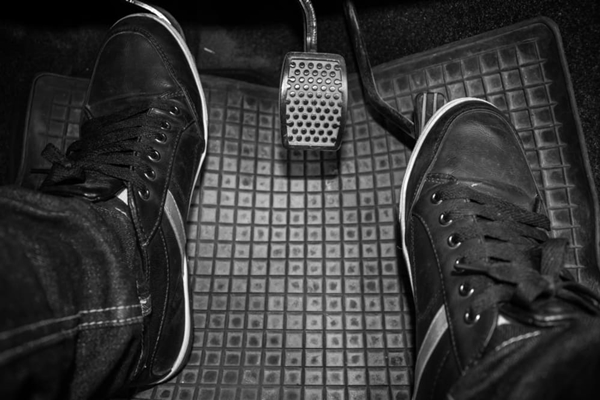
This is since the dead pedal is way farther from your brakes than the brakes are from the gas
Reduced Fuel Economy
If your leg gets tired from waiting on the brake, your foot may end up on the brake pedal. If you do so, even gently, brake pressure would be applied. This will heat up your brakes.
In turn, it will wear the brake pads out faster. It can even warp the rotors. This will also require more effort from the engine and reduce fuel economy.
RECENT ARTICLES



